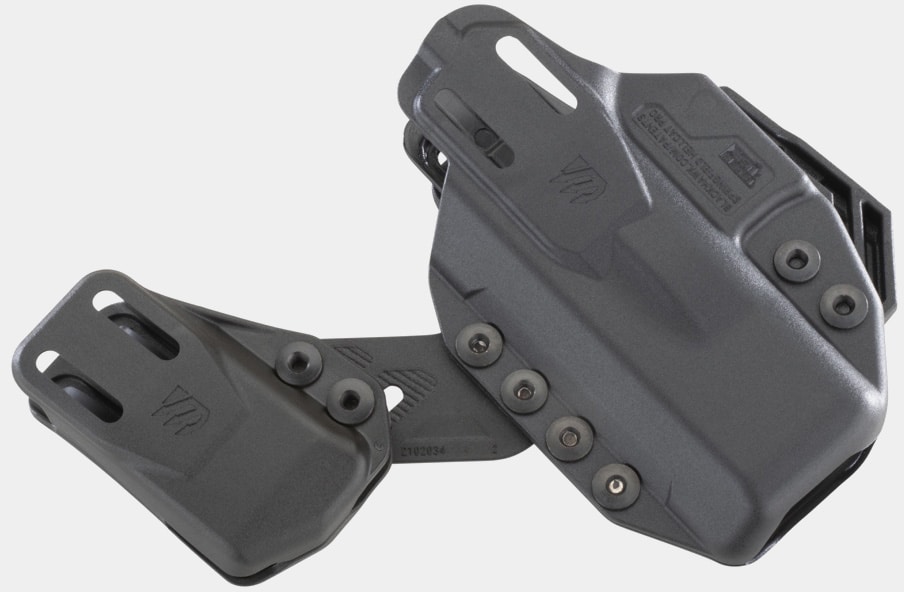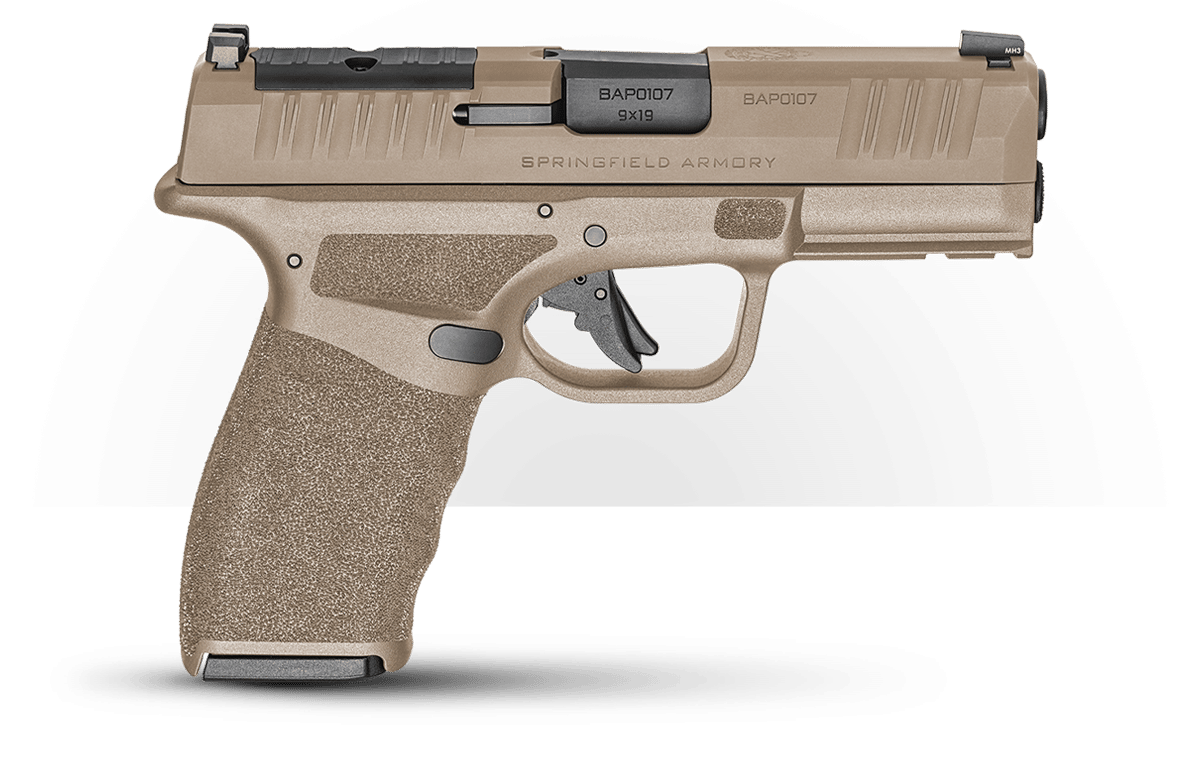Review: Blackhawk Stache IWB Premium Holster Kit
March 8th, 2024
7 minute read
Apart from a high-quality firearm, one of the most important accessories for all of us who live the EDC (Every Day Carry) lifestyle is a safe, effective and reliable holster. To be honest, there is a seemingly bewildering array of choices out there in holsters today because there are so many carry styles and materials options.
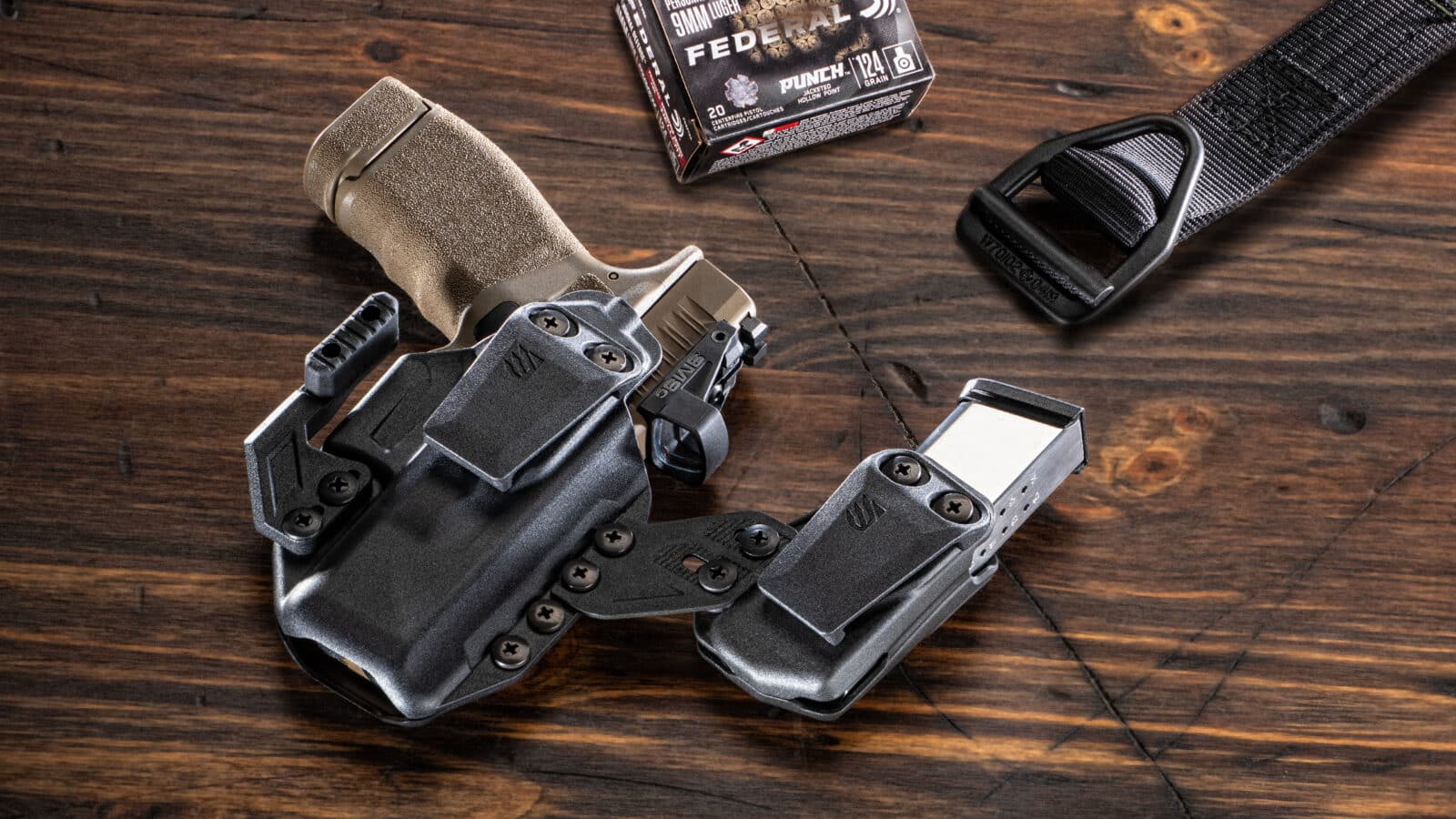
While there is much to be said for outside-the-waistband (OWB) carry, when you need to be as discreet and low-profile as possible, nothing beats an inside-the-waistband (IWB) rig. But it’s not as simple as just choosing an IWB holster these days.
There are a plethora of optional carry positions, ranging from “3 o’clock” that is 90 degrees to the strong side and variations such as “4 o’clock”, “5 o’clock” and more that position it farther back toward the centerline of the body. There are also more obscure carry positions such as small of the back (SOB) that positions the holster in the center of the back, and crossdraw that positions the holster on the weak side of the shooter.
By far, today’s most popular way to carry IWB would be appendix carry. This carry method positions the pistol on the strong side of the shooter, right up front. In fact, it has become so popular that several holster makers have developed holsters specifically designed for this mode of carry. But what about those of us that might want to carry in different depending on the day, weather and wardrobe? This is where Blackhawk comes in with its new Stache IWB holster.
[Read more about the proper appendix carry position.]
Carry Options?
While Blackhawk does offer the polymer Stache in a basic holster configuration for a wide range of popular pistol models for an MSRP starting at just $33.95, I chose to try out their Stache IWB Premium Holster Kit. With a starting MSRP of $64.95, this kit comes with not only the holster, but also a magazine carrier and their “Concealment Claw.”
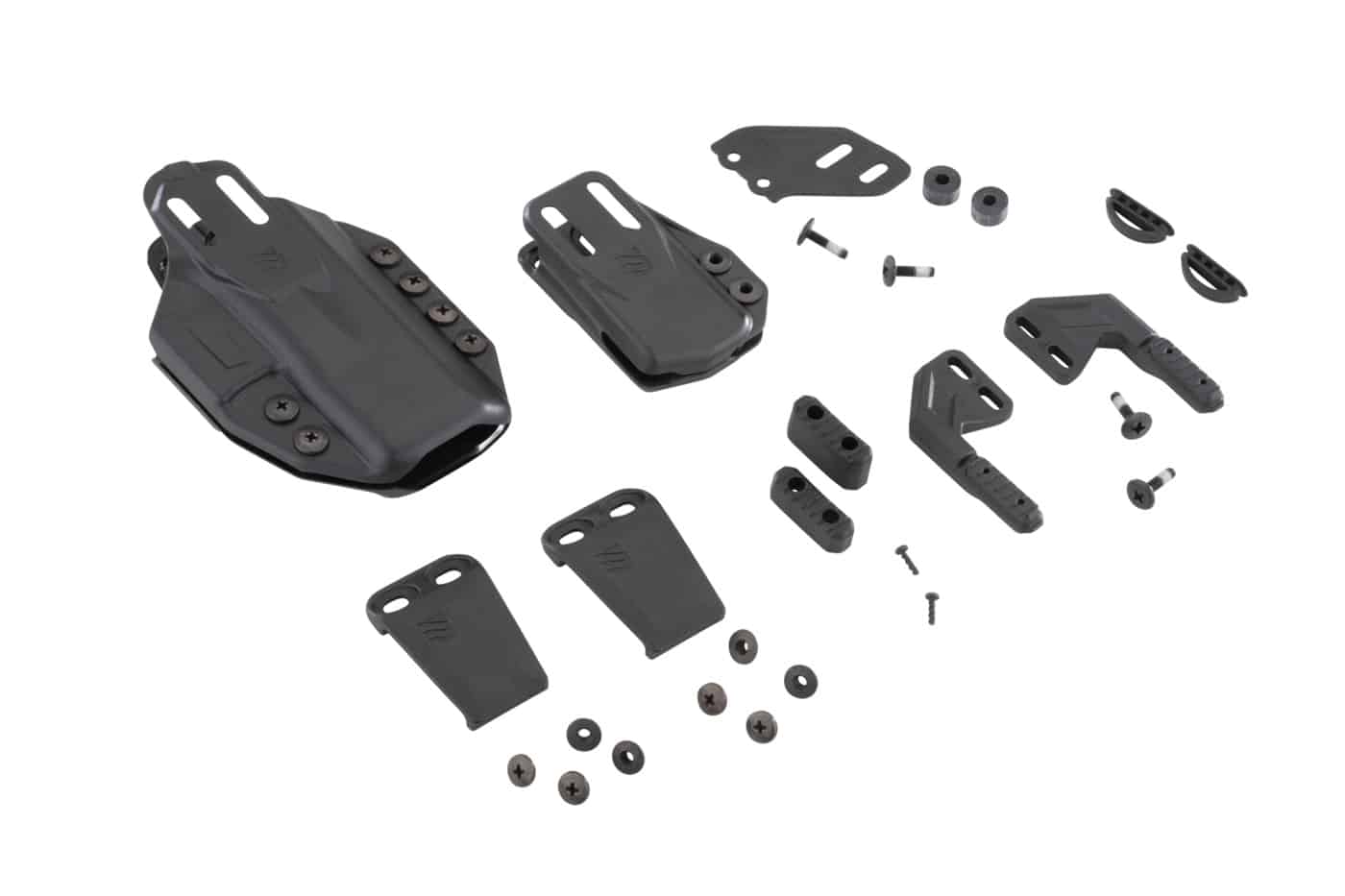
For those not familiar with the adjustable passive retention Stache holster, it is basically a holster ecosystem that allows the shooter to position the firearm and magazine in a very wide range of configurations. The Premium Holster Kit consists of a polymer holster shell, magazine carrier shell and a selection of clips, adapters and hardware to allow the shooter to customize and create the best holster set-up to suit their EDC needs.
In addition to the kit, I also noted that Blackhawk offers some interesting optional products associated with the Stache holster. One of these is the Stache N.A.C.H.O. (Non-Conventional Adaptive Carry Holster Option) Belly Band, which helps the shooter carry in situations where their wardrobe makes it harder to carry a holster. This could be times like when you’re jogging or hiking, or just don’t have a belt on to secure your holster.
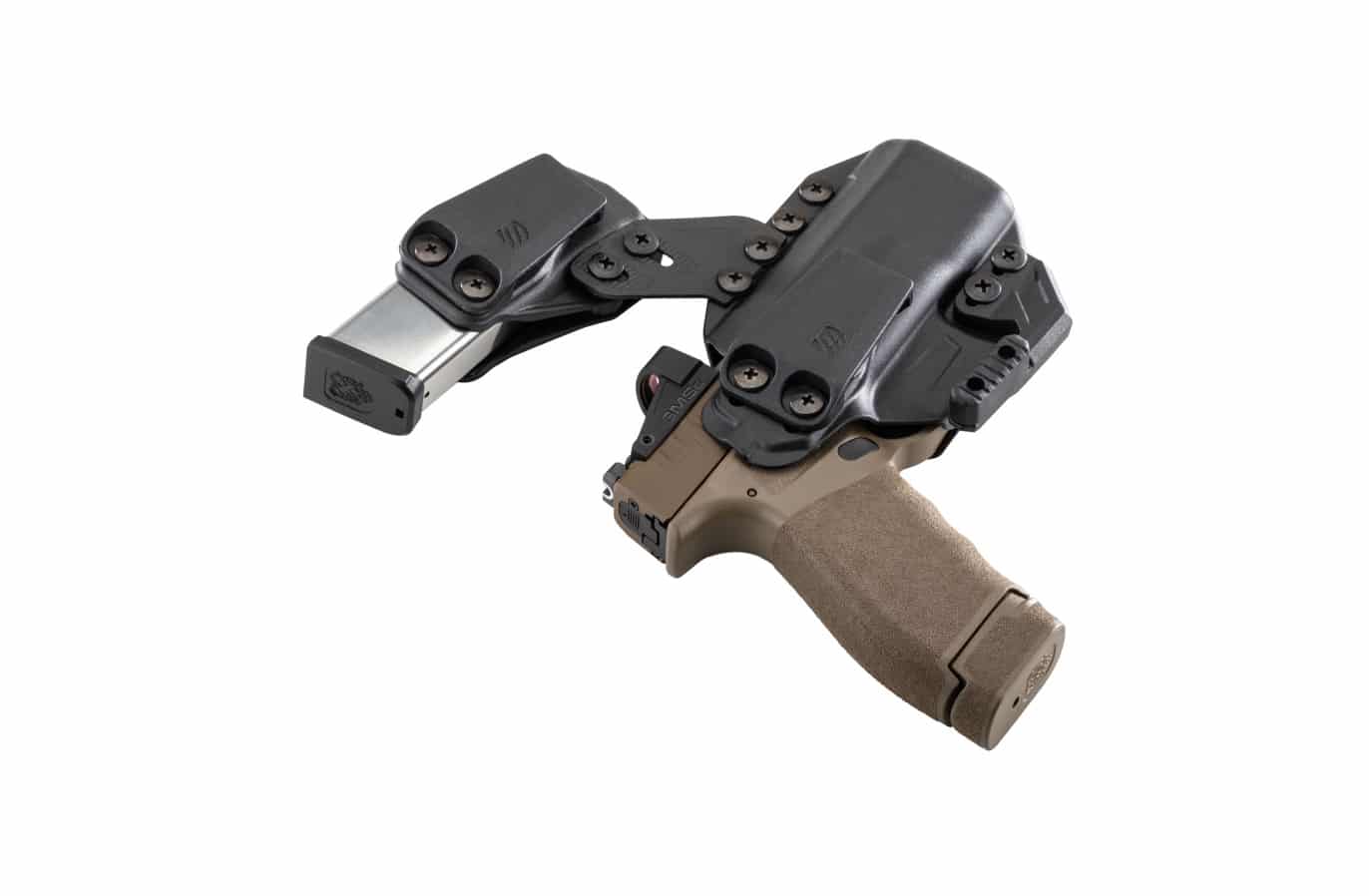
Another unique optional Stache accessory is the R.A.H.C. (Rapid Access Holster Carrier). In short, the R.A.H.C. is a versatile pack that allows the user to carry their firearm as a fanny pack or slung across their chest, giving them rapid access to their firearm.
There is one more option available I want to note. The Stache IWB 1.75″ Tuckable Belt Clips replace the center single clip in the middle of the holster with two offset clips. This is not included with the premium kit, but is something that I might want to try in the future.
Setting Up
For my test of the Stache, I wanted to create a holster for a very compact pistol, but I also wanted capacity, proven reliability and accuracy. My choice was simple; I went with a Springfield Armory Hellcat Pro 9mm in Desert FDE, topped off with a Shield SMSc micro red dot.
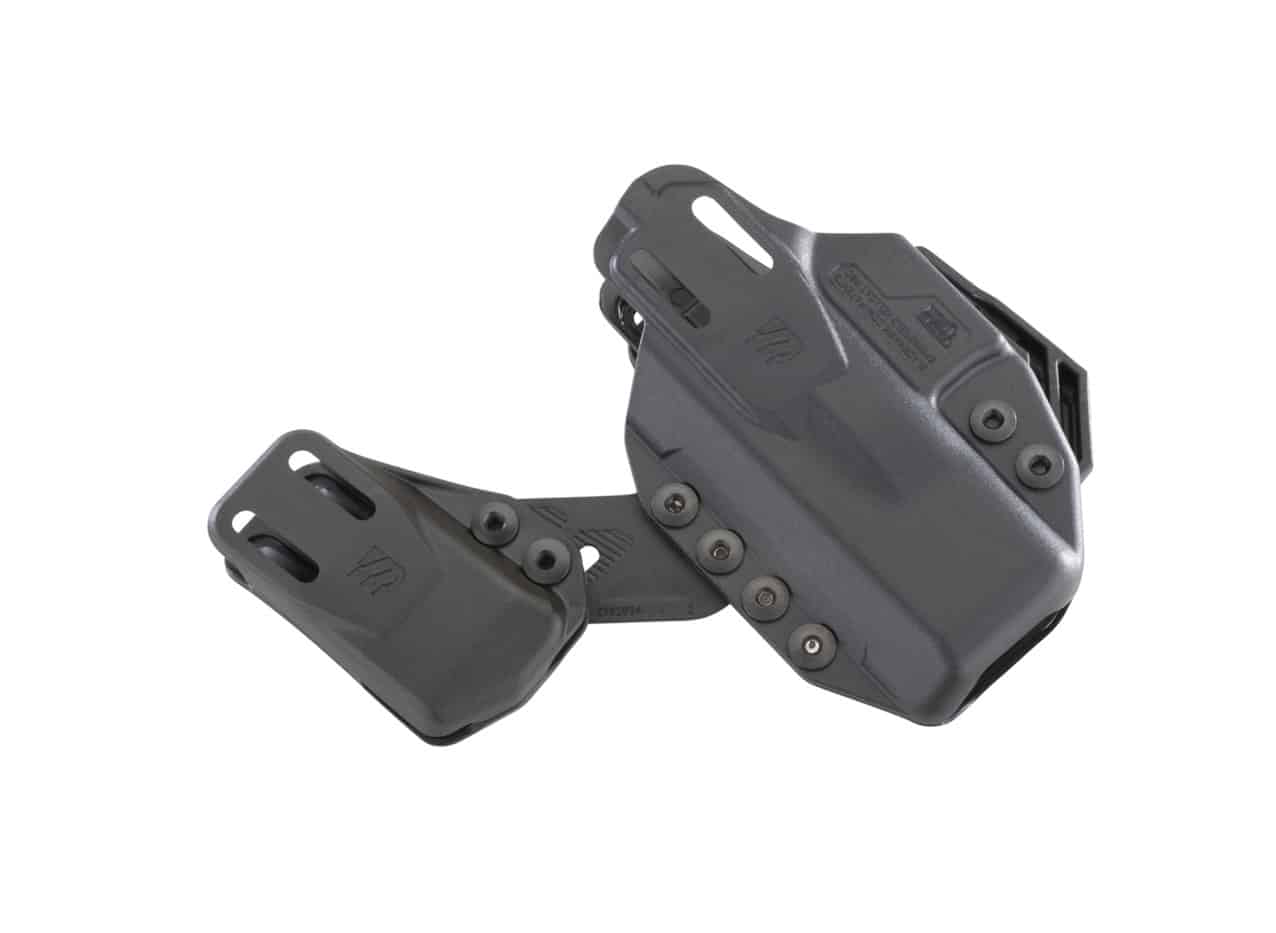
There were several options to order the Stache, but as noted I wanted to test several carry options so I selected the premium kit. Before testing this holster system, I wanted to set parameters for my testing. I determined that the only way to do this would be to use the system for at least one day per configuration, or more if I found it comfortable.
I have found that holster selection is something you must try and use before finding the set-up that works best for you. I have found holsters that feel great, for a minute or two, but after a few hours you can’t wait to take it off. This is where I think the Stache system excels, as you have several different options in one bag.
Due to the design of the Stache, you have an IWB holster designed for handguns with or without optics that can work as either a right- or left-handed carry rig and can be adjusted for cant as well as carry height. In addition, it can easily be adjusted from a traditional behind-the-hip position to appendix carry.
One very important part of the Stache system is the optional “Concealment Claw, that is included in the premium kit. This “claw” is an adapter that is located below the triggerguard area of the holster is designed to push the holster against your belt. This subsequently pushes the grip of the pistol against your body, minimizing the risk of “printing” through your clothing.
The kit comes with two claws; one for right-hand configuration and one for left-hand configuration. The kit also includes two different pads for the claw, so the user can choose how much pressure is applied against their belt.
Hands-On
One thing that some people forget when setting up their IWB holsters for the first time is the room needed. You should consider your wardrobe before you start using an IWB, as there should be enough room in your waistband for you, your pistol/holster and your magazine carrier. Be sure to factor this in.
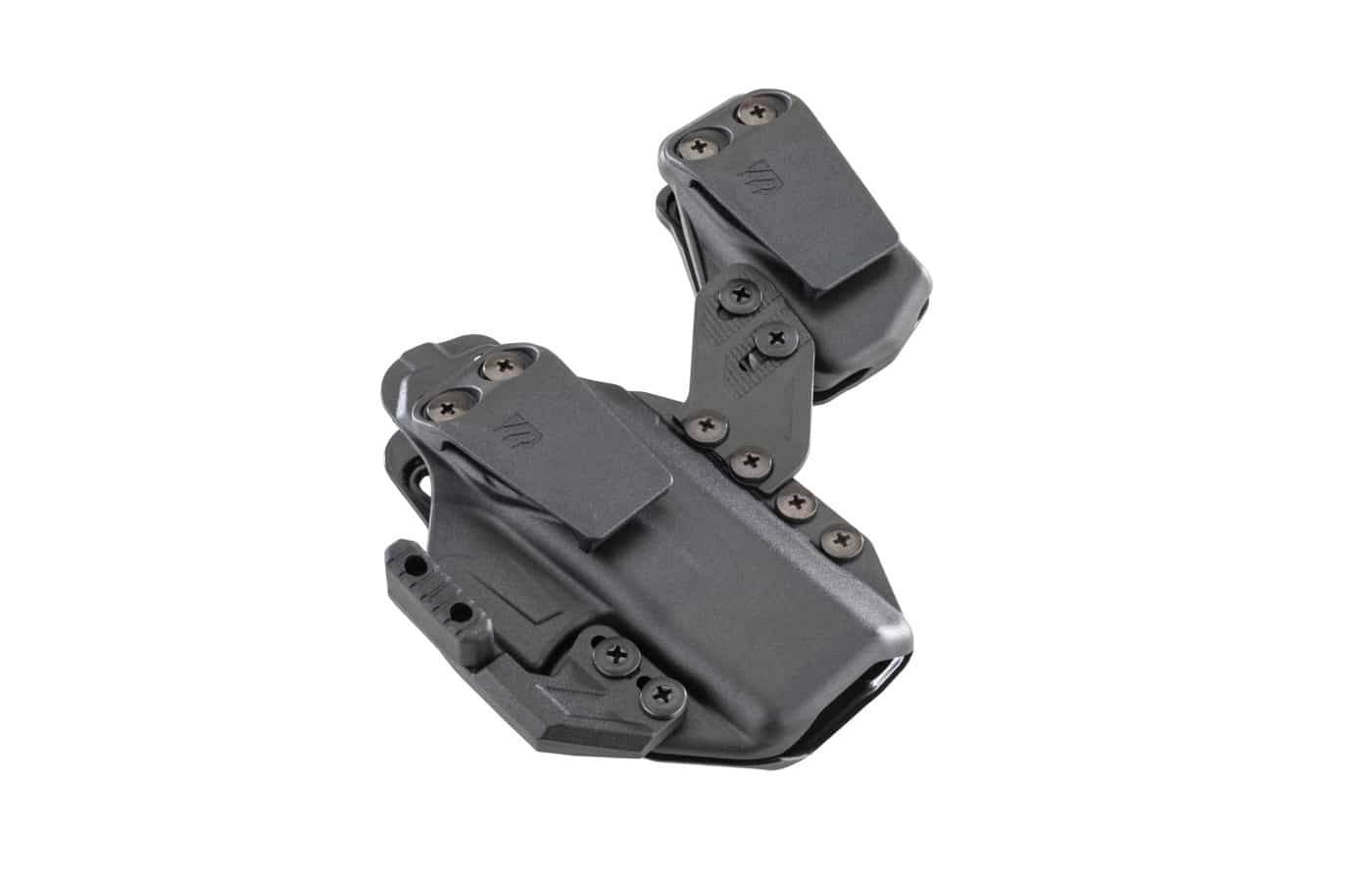
The Stache IWB Premium Holster Kit comes completely disassembled, allowing the user to customize their holster to their needs. The first configuration I tried was appendix position, with the holster and magazine carrier attached together employing the included magazine carrier adapter. While I am not necessarily a fan of appendix carry, I did want to give it a fair shake.
I configured my Stache for the right-hand configuration with the smaller pad on the claw. Even though the holster and magazine carrier joined together has so many advantages and I found it very comfortable to carry, I’m not trained with this mode of carry. Despite the benefits, I found it hard to adjust to it as I’m not used to doing my holster presentations from the appendix position.
For the second configuration, I separated the holster and the magazine carrier, but still tested carrying both in the appendix position. I found this configuration easier to use, but still was not 100% in my comfort zone.
In the third configuration, I moved the magazine carrier to my 9 o’clock on my left side and left the holster in the appendix position. With this set-up, I found having the magazine carrier on my left side much more comfortable. As you might suspect, there was a fourth configuration I tried and yes, you guessed it, it is the holster in 3 o’clock configuration. This option was much more comfortable for me.
The variable nature of the Stache design was really showing its value as I tried all these different configurations. The nice part of this belt clip is that I can easily move the holster forward and back depending on what I’m doing — standing, sitting, walking, driving or just spending some time at the range. I found that the 3 and 9 o’clock positions for the holster and magazine carrier are the best choices for me, but again, that is my personal choice.
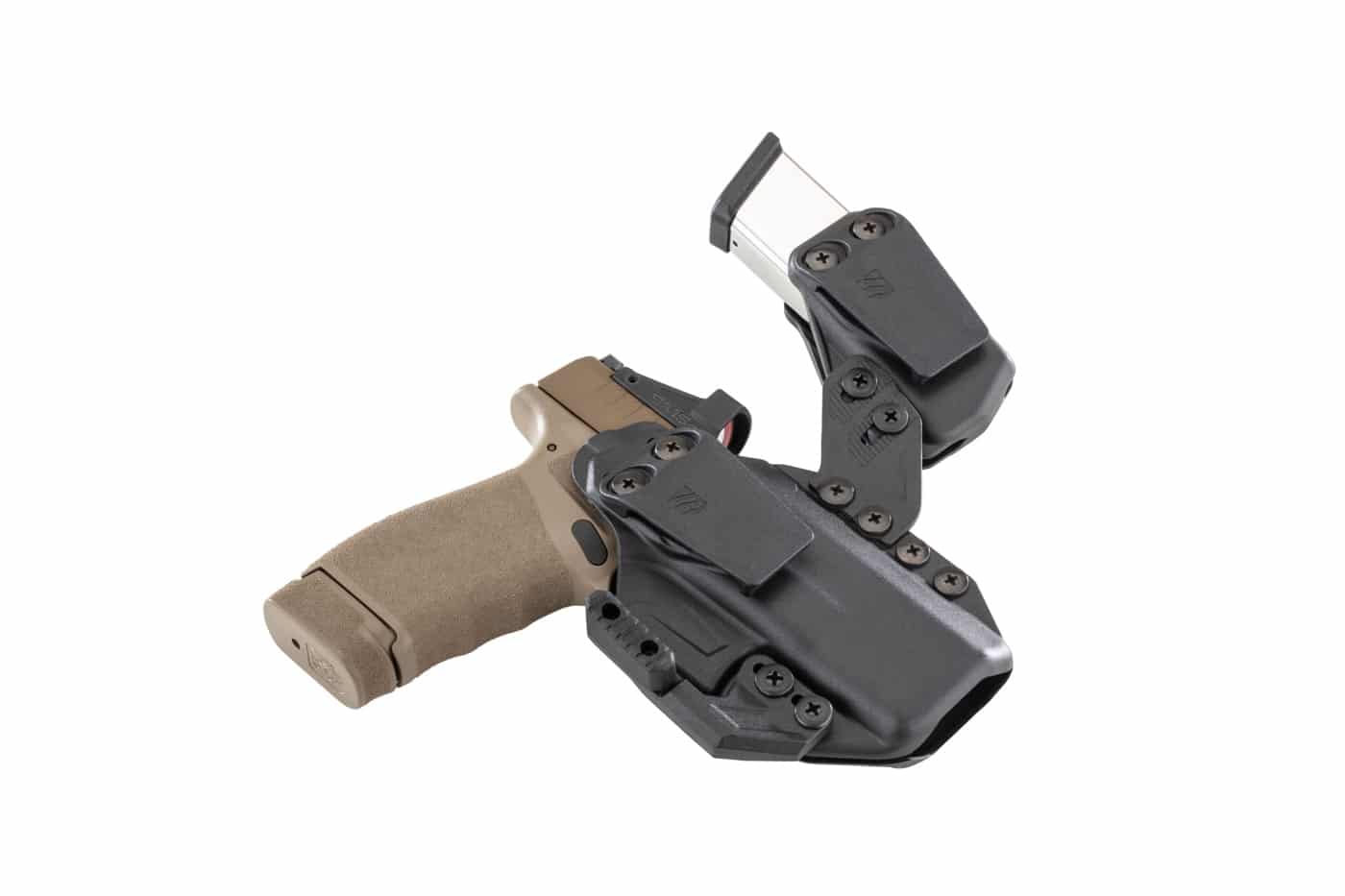
Now for the elephant in the room. Retention. Both the holster shell and the magazine carrier shell have two retention adjustment screws that allow the user to select how much retention you want on the pistol and the magazine, independently. This feature is something that requires a lot of testing at the range. You want both the pistol and magazine to have enough retention to keep the pistol and magazine in place while carrying, but you don’t want the retention to make it difficult for you to do your pistol presentation or do a magazine change if necessary.
[Editor’s Note: The author’s reference to “retention” does not suggest this holster is suitable as a security rig. For more information, read about the levels of holster retention.]
Another consideration of retention is reholstering. Unfortunately, a lot of people don’t pay too much attention to this topic, but it’s very important. To quote Ken Campbell, CEO of Gunsite (read more on the Gunsite training center) and my first instructor there, when reholstering, do it “slowly and reluctantly”. Setting up your holster and magazine carrier for pistol presentations, reloads and proper reholstering is imperative.
Conclusion
Upon finishing a couple of days of testing and carrying the Stache holster system, I’m very pleased with the system. I like the options that the system provides. I tested several variations, and I found the one that fit me and my needs the best.
Is this holster worth my time and money? Absolutely. This offers four or five holster options in one package with a good range of options and accessories and is a great choice for EDC. This true whether you prefer appendix, 3 o’clock or some other variation. This holster is well-suited to addressing a wide range of carry needs.
For me, this holster system does it all and does it all very well — and all without breaking the bank. When looking for a sturdy and reliable IWB holster system to enhance your EDC lifestyle, the Blackhawk Stache holster system should be on your short list.
Editor’s Note: Please be sure to check out The Armory Life Forum, where you can comment about our daily articles, as well as just talk guns and gear. Click the “Go To Forum Thread” link below to jump in and discuss this article and much more!
Join the Discussion
Featured in this article
Continue Reading
Did you enjoy this article?

 48
48




